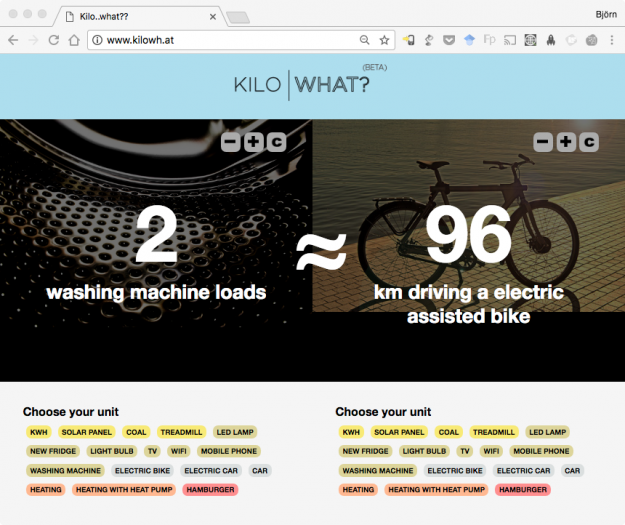Halverad studietid med bibehållna resultat
Huvuddelen av finesserna med the Open Learning Initiative finns nu förklarade på svenska i Alla kan skrivas blogg.
Huvuddelen av finesserna med the Open Learning Initiative finns nu förklarade på svenska i Alla kan skrivas blogg.
Alla kan skriva har en bloggpost om årskonferensen där TEL-gruppen är representerad.
Our former colleague Jonas Moll has already published a nice blog post on this:
My colleague, Pernilla Josefsson, successfully defended her thesis today!
And now our college Daniel Pargman has presented his view on the thesis.
This meeting is organized by the the International Society for Research on Internet Interventions (ISRII) and was this time held at the Hilton hotel in Berlin. According to their webpage, this society “promotes the scientific study of information and communication technologies targeting behavioral, psychosocial, health and mental health outcomes“. Internet intervention commonly include elements that educates the user or aims to change their behavior. It is therefore not too different from what we would call Technology Enhanced Learning.

I (Fredrik) presented a poster with early results on two studies exploring the two constructs usefulness and ease of use of an platform used for ICBT (Internet-delivered Cognitive Behavior Therapy). These studies are a part of BIP, a project that has its home at the Karolinska Institute and SSL (Stockholm County Council) focusing on the development of ICBT for children and adolescent. The BIP-team also held their own symposium at the conference on “Making ICBT an evidence-based treatment for children and adolescents with anxiety disorders and OCD: preparing for implementation in regular care”

One presentation I found particularly interested was called “Therapeutic alliance to the fully automated ‘counsellor’ Endre“. Marianne T. S. Holter (Oslo University, Norway) presented a grounded theory study carried out with a fully automated program for quitting smoking. The study meant to explore what therapeutic alliance would mean when the counsellor is a computer program. All study-participants were aware of the fact that they were “conversating” with a computer program. By being aware of that they felt that they did not need to consider expectations or feelings of a human counsellor, since the program would not “judge” them. So, it seems from the result presented that some kind of alliance could be formed with the users and the computer program. Looking forward to read the published paper and to see similar studies in the future.
The second presentation that caught my interest a bit more than the rest was “Towards Improved Application of Gamification for Internet Interventions“. Mark Floryan (University of Virginia, USA) presented a model for gamification of Internet Intervention. Mark pointed out why many attempts to gamify failed. The simple reason was that only one (or a few) gamification elements were used or used in the wrong way or combination. Unfortunately my memory fails me to remember the details. Though, the message I took home from this presentation was that in order to successfully implement and evaluate the impact of gamification in Internet Intervention it needs to be done more systematical way. And, the model that Mark presented would guide developers on how to do that, and would also make it easier to compare studies and designs that included gamification.
One of my many reflections from the meeting was that many of the symposiums brought up studies that had included, co-design and different approaches to participatory design and/or user-centered design. Thus, the user perspective seems to be an aspect considered more and more important in this community.

Reducing the use of energy is important for several reasons, such as saving money and reducing impact on the climate. However, the awareness among non-experts of how much energy is required by different activities is generally low, which can lead to wrong prioritizations. In this study, we have developed an interactive tool to increase “energy awareness”. A group of 58 students first did a test to benchmark their current energy awareness, then tried the tool for 10 min, and then did the same test immediately after trying the prototype and one week after trying the prototype. In addition, they answered questions regarding which, if any, of the energy requirement of different activities surprised them, any thoughts about their own energy use aroused after using the prototype and what they thought about using the tool compared to more conventional methods of learning. The results showed a significant learning effect in energy awareness with a very strong effect size of 1.689, that they were most surprised by the energy required to produce a hamburger, 39 of 58 explicitly said they intended to change one or more aspects in order to improve their energy use, where 24 actions involved changing habits and 18 actions was of a one-time investment character. The attitude towards using such a tool instead of more conventional learning was very good and the words most frequently used to describe the tool was good, simple and easy to use, fun, and interesting, but five users also said they were bored after a while. In total the results indicate that using an interactive tool like this even for a limited time is a good way to in an efficient and fun way increase energy awareness.
The paper is available at https://link.springer.com/chapter/10.1007/978-3-319-55134-0_14